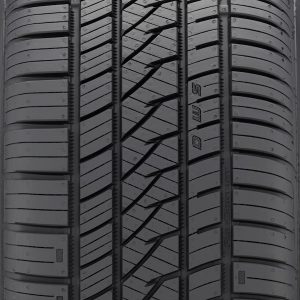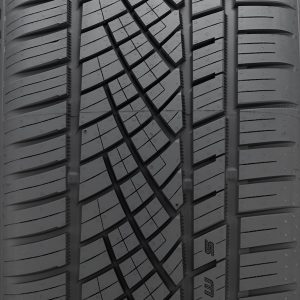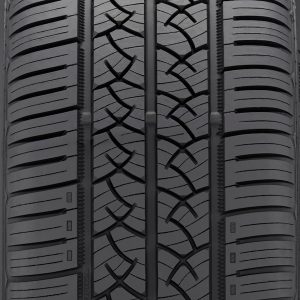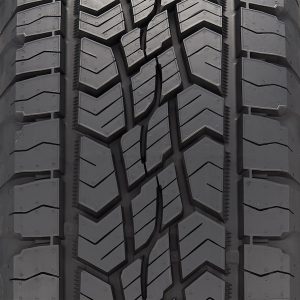Who makes the rubber beneath your car, and does it earn your trust? We ask that question because buying new tires feels more complex than it used to. Continental began in 1871 in Hanover, Germany, and built a reputation with innovations like the first winter tire in 1934 and early run-flat systems.
In this guide, we explain how we evaluate a brand for everyday driving across varied U.S. weather and road conditions. We preview the ratings you will see: Wet Rating, Dry Rating, Winter/Snow Rating, Comfort Rating, and treadwear, so you know what to expect from our tests and hands-on feedback.
We also outline warranty and support features like the Total Confidence Plan, with mile warranties and road hazard coverage, because service can sway a purchase as much as on-road performance. By the end, we aim to help you decide quickly which tire fits your car, driving style, and budget.
Key Takeaways
- We assess brand performance, safety, and value for real-world U.S. driving.
- German engineering and long R&D history shape consistent product results.
- Expect clear ratings on wet, dry, winter, comfort, and tread life.
- Warranty and satisfaction guarantees matter when comparing premium options.
- Our tests combine lab metrics with real road feedback to show true value.
Are Continental Tires Good? The Quick Buyer’s Take for U.S. Drivers
When you need a fast, practical read on how these tires behave on real roads, start here. We give a concise overview of wet, dry, winter/snow, comfort, and treadwear so you can decide quickly for your car and commute.
Quick summary: expect balanced performance and dependable control across varied weather conditions. Independent tests often rate this brand highly, and proprietary tech like SportsPlus and Green Chili 2.0 aim to improve traction and mileage.
On wet and dry driving, steering feel is confident and handling stays predictable. Advanced tread designs help deliver impressive grip while keeping efficiency and ride comfort in check.
“Real value shows when a tire holds composure on imperfect pavement and in sudden rain.”
Noise-mitigation (ContiSilent) and puncture-mitigation (ContiSeal) are practical upgrades for busy urban routes. Expect solid wet stopping, stable dry handling, light-winter versatility with the right model, quiet ride, and reliable tread life.
- Premium pricing reflects safety margins, refinement, and warranties.
- Match each tire model to your car and commute to avoid overpaying or underspecifying.
- Our at-a-glance: good wet braking, stable dry handling, capable light-winter use, and long wear when maintained.
Who Makes Continental Tires and Who Owns Continental Tires?
To judge performance and longevity, we start by identifying the maker and the engineering network behind the product.
Ownership and manufacture: Continental AG, founded in Hanover in 1871, designs and makes Continental-branded products worldwide. The company supplies original-equipment fitments to major automakers, which forces strict targets for handling, noise, and durability before approval.
German engineering heritage: Hanover roots, global expertise
Hanover is the historical base for research and early innovations, including the first winter tire in 1934. That heritage now pairs with global labs and proving grounds—most notably Contidrom—where engineers validate compounds and construction across climates.
Ownership and manufacturing today: Continental AG and OE partnerships
Continental serves passenger, truck, and light truck segments, and technology scales between categories. OE partnerships act as a real-world pressure test, while independent tests add a third-party check on claims.
“Automaker specs and rigorous validation keep product lines aligned to safety and performance goals.”
- Wide coverage: passenger and truck tires, plus specialized truck tires and light truck options.
- R&D to road: innovations in winter tire design and run-flat systems began decades ago and shape current compounds.
- Predictable wear: consistent formulations and construction support steady wear and long-term stability for daily driving.
How Continental’s Technology and Testing Translate to Everyday Safety
Before a tire reaches stores, it completes hundreds of test kilometers to prove safety and day-to-day performance. We rely on Contidrom in Hannover plus global runs across climates to press each design under varied weather and road conditions.
Contidrom and worldwide validation
Each new product faces long laps and controlled drills at Contidrom, then additional tests on wet tracks, cold roads, and high-speed circuits. This combined program helps us predict braking, hydroplaning resistance, and steady tread behavior in real life.
Key technologies and real outcomes
SportsPlus improves wet grip and evens tread wear, so braking feel stays consistent as miles add up. The Green Chili 2.0 rubber compound extends total mileage without dulling everyday handling.
ContiSeal can seal common punctures to reduce roadside downtime. ContiSilent uses an inner absorber to cut cabin noise for a calmer commute while preserving handling and durability.
Independent recognition and why it matters
Internal tests set targets, but awards and top scores from ADAC, AutoBild, and AutoZeitung confirm that lab results match road reality. We value third-party validation because it reduces marketing risk and gives buyers added confidence.
- Pressure-tested: track plus global road miles validate predictability and safety.
- Tech tied to outcomes: better wet stopping, longer mileage, less downtime, and quieter rides.
- Third-party proof: independent tests back internal claims so the tire’s intended character shows up on your vehicle.
“Rigorous tests and independent checks are the reason safety and comfort translate from lab sheets to daily driving.”
Wet Rating: Braking, Hydroplaning Resistance, and Rain Control
Wet-road performance matters most when rain turns a commute into a test of traction and stopping. We grade wet behavior by braking distances, hydroplaning resistance, and steering control under puddles and heavy flow.
Rubber compounds and tread designs optimized for wet grip
Specialized rubber blends and dense siping keep contact patches flexible in low temperatures. Circumferential grooves and block geometry channel water away to preserve grip and control.
What we’ve seen in tests and daily driving on U.S. roads
In our trials many patterns shorten stopping distance and steady steering during panic braking. SportsPlus tech often helps maintain feel as tread wears.
- Hydroplaning resistance comes from groove volume and shoulder evacuation that shed water at highway speeds.
- continental all-season tires balance wet traction with durability for commuters who face rain and occasional slush.
- Proper pressure, alignment, and rotation keep designed braking performance intact.
“Shorter wet stopping and predictable lane changes translate to real confidence in sudden storms.”
Dry Rating and Handling Confidence
We judge dry handling by how instantly a tire reacts and how composed it stays at speed. Our Dry Rating focuses on steering precision, high-speed stability, and short stopping distances on dry pavement.
Steering response and on-center feel
Construction stiffness and supported tread blocks create immediate on-center feedback. That sharper response makes turn-in predictable and helps during quick lane changes.
High-speed stability and road composure
Carcass design and compound tuning keep the tire planted on open highways. In our tests, stable shoulders and balanced sidewall support reduce wander and improve midcorner confidence.
Braking and contact patch stability
Consistent contact patch shape lets us measure shorter stops without a harsh ride. We call this braking performance dry because it links stopping distance with everyday comfort.
tread pattern and shoulder design balance crisp feedback with even wear. Proper inflation and alignment are essential to realize these handling and braking gains.
“Dry predictability forms the foundation for confident driving year-round, even as winter needs vary.”
Winter/Snow Rating and All-Season Realities
Winter conditions demand a clear plan for choosing between weather-focused grip and year-round convenience. We explain how cold-weather design changes performance, legal considerations, and when a dedicated fitment is worth the swap.
Winter tires versus all-season options
Dedicated winter fitments use a softer rubber compound and deeper, more aggressive tread. That combination keeps flexibility in low temps and improves bite on packed snow and ice.
All-season patterns serve year round moderate use and suit round moderate climates. They offer convenience but do not match a winter tire in severe cold or prolonged storms.
Traction on snow, ice, and slush
Block edges and dense siping clear slush and keep the contact patch working. This design shortens stopping distances and boosts braking performance on icy intersections and uphill starts.
Passenger and light truck fitment
We check load ratings and available sizes for passenger and light truck applications. Proper fit ensures stability across winter conditions and preserves handling for daily commutes.
“Switching to a winter-focused option can be the single best step to reduce unexpected stops and loss of control in cold months.”
- Check local rules—some states require winter-specific fitments in mountain passes.
- Perform monthly tread depth checks during winter to keep reliable bite and water evacuation.
- Match tire choice to your winter risk profile: short snow exposures may need 3PMS-rated all-seasons; heavy snow needs a winter tire.
| Feature | Winter Fitment | All-Season (3PMS available) | Best Use |
|---|---|---|---|
| Compound | Soft cold-weather rubber | Balanced; hardens in deep cold | Severe cold vs. year-round moderate |
| Tread | Deeper, aggressive siping | Moderate siping, shallower depth | Snow/ice vs. mixed roads |
| Braking & traction | Shorter stops on packed snow | Good in light snow; less on ice | Higher safety margin vs. convenience |
Treadwear, Comfort Rating, and How Long Continental Tires Last
We measure how long a set of tires lasts by combining lab mileage runs with real-world driving data. That gives a practical view of lifespan, comfort, and long-term safety.
Mileage expectations and warranties
Realistic mileage: Select lines carry mileage warranties up to 80,000 miles under the Total Confidence Plan. Actual mileage varies by driving style and climate. We note that Green Chili 2.0 compound helps extend service life on hot pavement and long commutes.
Factors that impact wear
Several variables change tread loss: hard acceleration, late braking, skipped rotations, poor alignment, incorrect pressure, rough roads, and winter exposure. Monitor pressure monthly and rotate every 5,000–7,500 miles to limit uneven wear.
Ride comfort and noise
Comfort rating reflects pitch sequencing, block layout, and ContiSilent foam that reduces cabin noise without dulling steering feel. Compound and rubber choice influence warmth, rolling resistance, and performance as tread thins over time.
- Smooth inputs and anticipating stops cut irregular wear and preserve quietness.
- Proper alignment protects tread life and maintains safety margins.
- Total Confidence Plan adds road hazard protection, a 60-day satisfaction window, and a 12-month limited warranty on eligible lines.
“Consistent maintenance and modest driving habits are the simplest steps to reach published mileage targets.”
Value, Warranty, and Fit: Passenger, Light Truck, and Year-Round Use
We focus on how coverage, fitment, and intended use translate to real-world value. Choosing the right package helps balance cost, mileage, and on-road safety across varied conditions.
Total Confidence Plan coverage and road hazard protection
Total Confidence Plan adds measurable value: a 60-day trial, mileage warranties up to 80,000 miles, a 12-month limited manufacturer warranty, and road hazard protection on eligible passenger and passenger light truck replacement products.
These benefits reduce ownership risk and give us an easy way to test fit and comfort without committing immediately.
Matching tires to vehicles: passenger, light truck, and SUV use cases
Map needs first. For daily commuting, choose passenger-sized fits for lower rolling resistance and quieter ride.
For family hauling or light towing, passenger light truck choices add sidewall strength and load capacity while keeping ride quality acceptable.
When work needs grow, select light truck tires or truck tires built for durability and harder tread compounds for mixed roads and mild off-pavement use.
- Year-round moderate: continental all-season tires suit many U.S. families by balancing comfort, handling, and seasonal versatility.
- Match load index and speed rating to your vehicle to protect performance and extend tread life.
- Consider severe-snow-rated all-season or dedicated winter fits when winters become occasional but significant.
- OE partnerships help ensure sizing, handling balance, and NVH expectations across passenger and truck platforms.
“Value is the combination of real-world performance, warranty support, and proper fit—not just initial price.”
| Use Case | Recommended Category | Key Benefit | When to Upgrade |
|---|---|---|---|
| Daily commute, paved roads | Passenger | Quiet ride, fuel efficiency | If towing or heavy loads occur |
| Family hauling, light towing | Passenger light truck | Higher load capacity, balanced comfort | Frequent hauling or rough roads |
| Work, mild off-road, towing | Light truck / Truck tires | Durable sidewalls, longer tread life | Severe off-pavement or heavy-duty towing |
Below Are a List of Some Popular Tires made from Continental

Continental PureContact LS
The PureContact LS is a highly rated grand touring all-season tire.
- Strengths: Outstanding wet and dry traction, excellent ride comfort, and long tread life (70,000-mile warranty). It also boasts impressive fuel efficiency due to its low rolling resistance design.
- Weaknesses: Some users report mild road noise on rough surfaces as the tread wears down.

Continental ExtremeContact DWS06 Plus
For sporty drivers, the ExtremeContact DWS06 Plus delivers all-season performance, including light snow capability.
- Strengths: Superb handling, responsive steering, and excellent grip in both wet and dry conditions.
- Weaknesses: Premium pricing, and some drivers note that snow traction, while good for the category, isn’t quite at the level of a dedicated winter tire.

Continental TrueContact Tour
The TrueContact Tour is a top choice for commuters seeking value and longevity.
- Strengths: Smooth, quiet ride, great fuel economy, and up to an 80,000-mile treadwear warranty.
- Weaknesses: Moderate handling; not a performance-oriented tire.

Continental TerrainContact A/T
For SUVs and trucks, the TerrainContact A/T provides on- and off-road confidence.
- Strengths: Balanced ride, low noise for an all-terrain tire, and reliable wet and dry grip.
- Weaknesses: Slightly less aggressive off-road traction compared to more specialized competitors.
Conclusion
We wrap up with a clear verdict on performance, ownership, and long-term value for U.S. drivers.
Overall, the continental tire line we tested earns a strong recommendation for drivers who want balanced daily performance and dependable traction. Continental AG designs and manufactures these products globally, and rigorous work at Contidrom plus independent recognition supports consistent results.
Wet braking, steady dry handling and braking performance dry show real value, while winter and snow capability performs well when you choose a model matched to your climate. Comfort and treadwear deliver long mileage in year round moderate and round moderate climates, and premium features often offer impressive grip and lower cabin noise.
Practical takeaway: pick the right size for your car, use the Total Confidence Plan when eligible, and maintain pressure and rotations to get the most from your purchase over time.
FAQ
Are Continental tires a reliable choice for everyday driving in the U.S.?
We find they offer consistent performance across dry and wet conditions thanks to modern rubber compounds and tread engineering. For drivers in moderate climates, Continental’s all-season options provide year-round traction and confident braking, while dedicated winter models improve grip in snow and slush.
Who manufactures these tires and what is their background?
Continental AG, based in Hanover, Germany, designs and oversees production. They combine long-standing German engineering with global manufacturing and original-equipment partnerships for automakers, which helps maintain quality and consistent standards.
How does Continental test and develop tire technology?
We note extensive real-world and proving-ground testing, including Contidrom facilities. Technologies such as SportPlus compounds, Green Chili 2.0 rubber, ContiSeal, and ContiSilent come from targeted testing to boost grip, reduce rolling resistance, and lower cabin noise.
Do Continental tires perform well in rain and resist hydroplaning?
Yes. Many models use asymmetric tread designs and water-evacuation channels to improve wet braking and hydroplaning resistance. Independent tests and everyday driving show strong wet grip and predictable stopping on U.S. roads.
How do they handle on dry pavement and at higher speeds?
We see precise steering feedback and stable high-speed behavior on performance and grand-touring lines. Sport-oriented compounds and reinforced sidewalls contribute to responsive handling and confident cornering.
Are Continental winter tires significantly better than their all-season counterparts?
For true winter conditions, dedicated winter rubber and siping outperform all-season designs. We recommend winter models where temperatures regularly fall below freezing or where snow and ice are common; all-season options work for mild, year-round climates.
Can we use Continental tires on light trucks and SUVs?
Yes. Continental offers passenger and light-truck (LT) lines tailored for SUVs, pickups, and crossovers. Choose tires rated for load and intended use—highway, all-terrain, or winter—to match vehicle needs and legal requirements.
What mileage and tread life can we expect?
Mileage varies by model and driving conditions; several touring lines advertise warranties up to 80,000 miles. Real-world wear depends on alignment, driving style, road surfaces, and maintenance, so following rotation and inflation schedules preserves tread life.
How quiet and comfortable are these tires on daily commutes?
Many models incorporate ContiSilent or specialized tread patterns to reduce road noise and smooth ride harshness. We find comfort levels high on grand-touring and premium all-season tires, with reduced vibration and lower cabin sound.
What warranty and protection options are available?
Continental often supports tires with mileage warranties and offers programs like Total Confidence Plan and road-hazard coverage via retailers. We advise reviewing specific dealer or retailer protections before purchase for repair, replacement, and prorated coverage terms.
How should we choose between passenger, light-truck, and year-round tires?
Match the tire’s load index and performance profile to your vehicle and typical conditions. Use passenger touring for sedans, light-truck or commercial-rated tires for pickups and heavy loads, and select dedicated winter models if you face regular freezing temperatures or heavy snow.
How do rubber compounds affect traction and fuel economy?
Softer, high-grip compounds improve braking and traction but wear faster; low-rolling-resistance compounds like Green Chili 2.0 reduce fuel consumption while balancing grip. We recommend choosing based on priorities: longevity and economy versus maximum wet/dry grip.
Are Continental tires recognized in independent tests?
Yes. We note frequent positive placements in industry and magazine tests for wet braking, handling, and comfort. Independent recognition reflects consistent engineering and effective technology transfer from OE programs to consumer models.
What maintenance practices help maximize performance and longevity?
Regular tire pressure checks, wheel alignment, balancing, and rotation extend tread life and maintain handling. Avoid prolonged underinflation and inspect for uneven wear from suspension or alignment issues to preserve safety and mileage.

